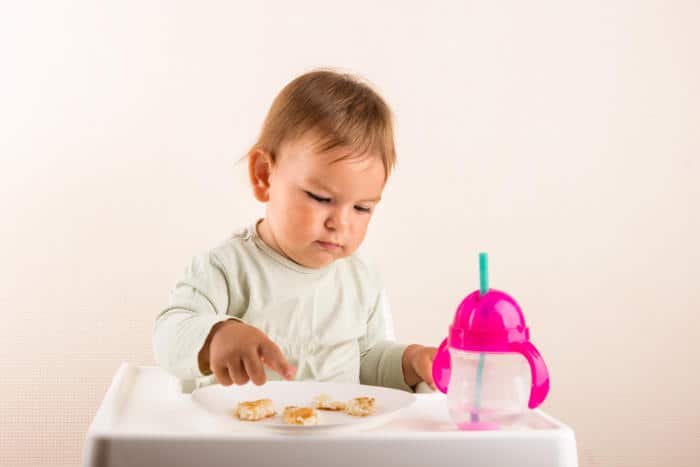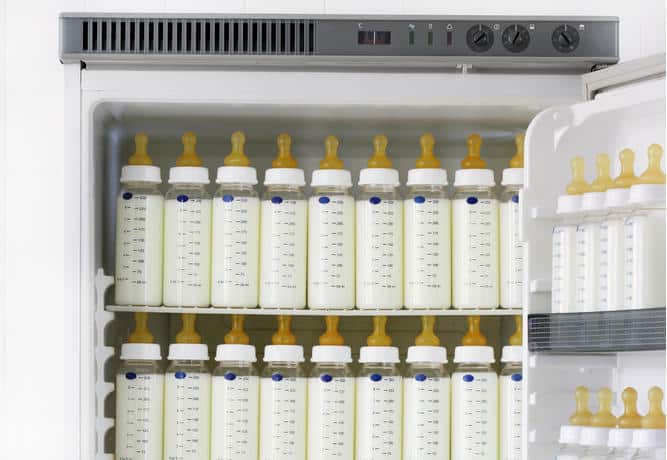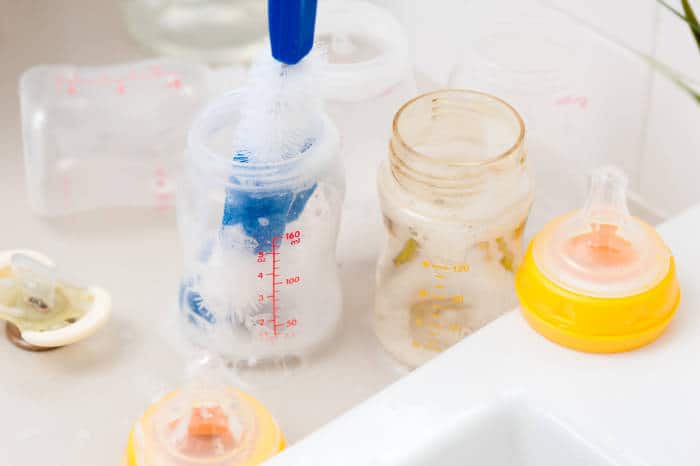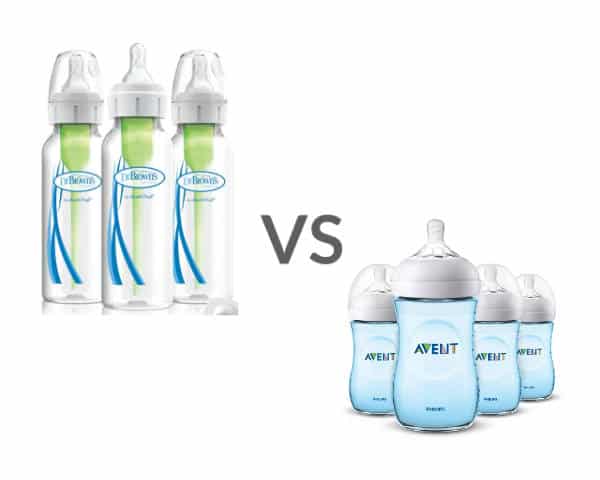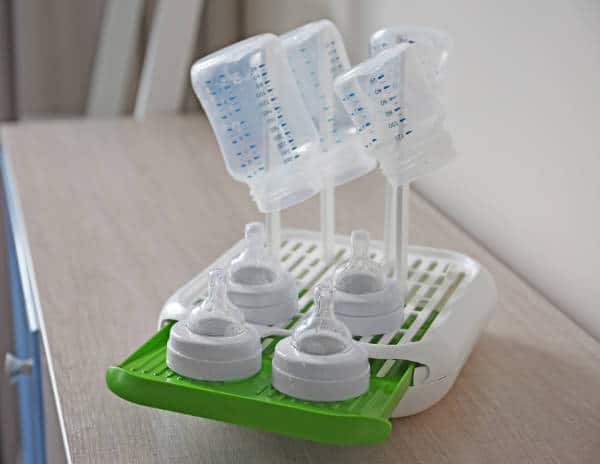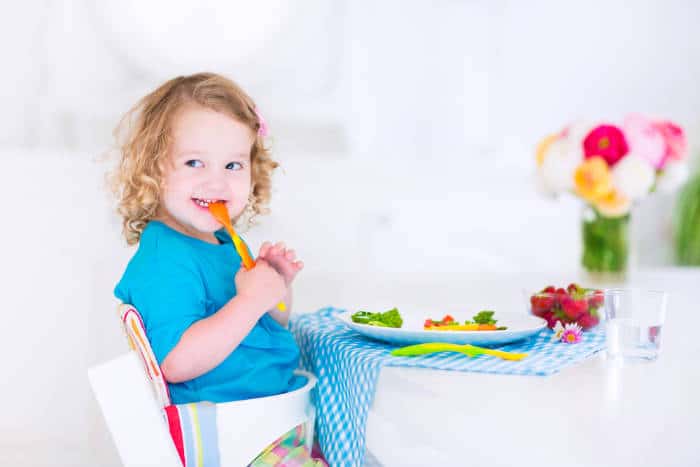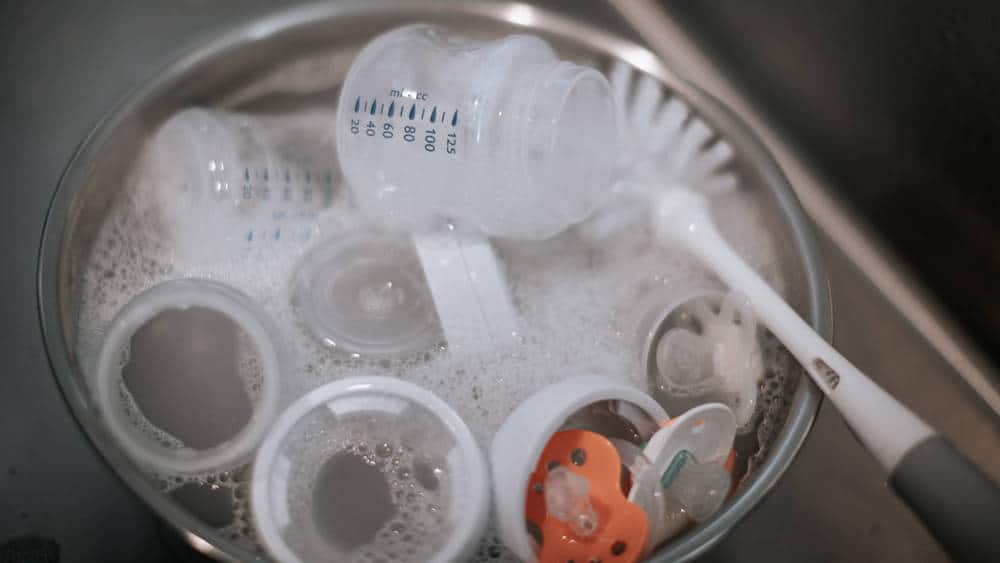Once you think you have bottle-feeding or breastfeeding mastered, life comes at you fast and it’s time to start feeding solids. Kids are ever-evolving, so just get used to riding that wave.
When my first baby started solids around 5 months, I had no idea where to start. I knew I wanted to expose her to everything so she wouldn’t be a picky eater. And while I elected to do baby-led weaning, there were times when a spoon and fork were necessary. Of course, it didn’t take long for her to demand she use the utensils herself.
Despite my protesting and attempts to help, she inevitably took over, which left me Googling everything there was to read about feeding babies and how to teach them to self feed. Lucky for you, it’s nowhere near as complicated as I assumed as a new mom. Have a gander at the basics outlined below!
Oh, and if you want a look at what self-feeding might look like the first few times you give it a whirl, have a look at this sweet video from Kayla Buell on YouTube:
Which utensil should I offer my baby first?
From a safety standpoint, it’s pretty clear that spoons are the better choice when deciding which utensil to offer first. They’re rounded, smooth, and lack sharp pointy spears that can accidentally stab into baby gums or their face.
With spoon feeding, they can learn and practice the fine motor skills necessary to scoop food and bring it to their mouths in a smooth, coordinated motion. Practice makes perfect and spoons allow them to practice safely.
Additionally, baby gear has evolved greatly in the last few years, and that includes cutlery. Now, you can find soft, silicone spoons and even “pre-spoon” utensils that babies can teethe on while they master eating. In many ways, the new generation of kiddo kitchenware is dual purpose and designed to last into toddlerhood.
If you want more information on which spoon to choose check out our roundup of the best baby spoons.
When should I offer my baby a spoon?
Most children have the necessary development and desire to use baby spoons at or around their first birthday. As always, all kids are different, so pay attention to cues from your child. Watch for them to grab at the spoon and engage with the spoon by clamping down and cleaning the food from the utensil.
Generally speaking, if you don’t mind the mess, you can give them a spoon a bit earlier. When they are comfortable with trying solids and have good control over grasping food with their hands and fingers, you can go ahead and hand them the spoon. They’ll learn through doing as long as you can resist the urge to intervene too much. And while spoons are pretty safe, it’s best to hold off on the fork because even the small, soft ones are a little dangerous if they poke themselves in the eye.
How old are children before they master using utensils to eat?
Fingers
Yes, fingers are utensils when it comes to baby feeding time. Kids should start trying to grab pieces of food with their fingers by about 6 months. If you follow the baby-led weaning approach, you know that it advocates for babies starting finger foods from the get-go. If not, try incorporating finger foods by at least 8-9 months as they should be developing important grasping motor skills, including the pincer grasp, around that age.
Spoons
When your child starts on solid foods around 4-6 months, they won’t have the dexterity necessary to hold a spoon and bring food to their mouths in a coordinated motion. However, you can safely let your baby handle a baby spoon during feeding time. It will help develop a healthy and positive association with utensils while allowing them to practice holding the spoon. You can expect them to successfully use a spoon by themselves and start self feeding anywhere between 12 and 18 months.
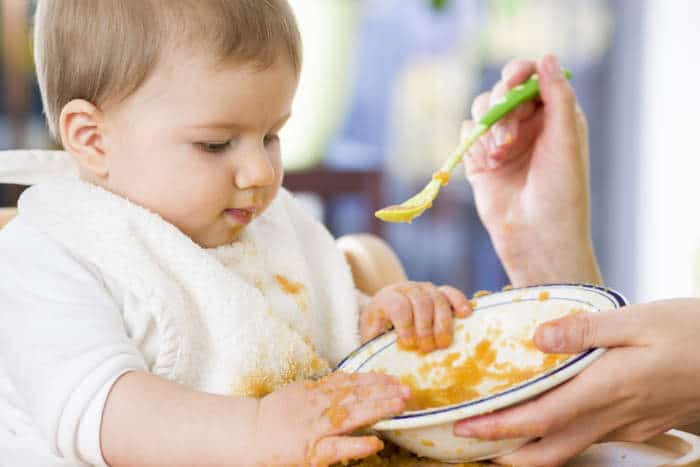
Forks
Unlike spoons, plastic and metal forks have points that can injure little ones that haven’t mastered gripping utensils and bringing them to their face safely. Once your kiddo has mastered the baby spoon, including the dipping and scooping motions, then it’s probably safe to give the fork a try. Most kids are more than ready by about 15 months. Again, watch your child and remember that kids develop and master skills at different speeds. So, your child may be ready before or after these milestone estimates.
Cups
Your child might be ready to try a sippy cup anywhere between 5 and 9+ months. Whenever they are hitting motor milestones necessary for eating solid foods, such as sitting up with support, you can feel good about offering a sippy cup. Some parents just incorporate that into the addition of solid foods into their diet.
However, there will come a day when the sippy cup has to go (especially spouted cups). Straw cups are favorites of pediatricians and dentists. For more information on which ones rank the highest, check out our round-up of the best baby straw cups. But when it’s time to ditch both spouted cups and straw cups, your toddler will transition to a regular, open cup by about 2-3 years old.
How to teach baby to use a spoon
Initially, you can get them used to the idea of holding a baby spoon by allowing them to hold onto an extra spoon while you feed them purées or oatmeal from another utensil. Once they become interested in holding it and bringing it to their mouth, you can assist them by placing your hand over theirs and guiding it to their mouth.
A major part of your child learning to self feed, requires you sitting back and letting them go. Let them try. Even if it’s messy, it’s worth the trial and error for them to gain the fine motor skills and confidence to perform the activity themselves.
What if they refuse baby spoons?
Refusal of spoons from a parent is actually a fairly normal milestone in your baby’s development. It comes when they are pushing for more independence and control in their daily activities.
To combat finicky eating, try incorporating more foods they can eat with their hands. You can also give them the utensil and let them use it on their own terms. Be prepared for the mess and try to relax as the food flies. Another useful tactic is the old-fashioned “airplane” game. Any variance of that might help as long as you turn it into a “fun” game for your little one.
Above all, don’t get too discouraged. It’s a normal phase that usually occurs sometime between 9 and 11 months.


